ARTIST STATEMENT
A sense of order has always been an important part of my work. “The Uranometria Series” has grown out of this concern and my avocational interest in astronomy. The word “Uranometria” is derived from the Greek word “uranos”, meaning sky or heavens. A literal translation of “Uranometria” is “measuring the sky”. This along with its counterpart, “Geometria” (geometry) - or measuring the Earth are the inspiration for the two major components in each drawing. Early astronomers mapped the night sky by connecting groups of stars together with imaginary lines creating constellations; cartographers mapped the Earth with imaginary lines of longitude and latitude drawn upon the landscape. By layering lines upon the paper, referencing an image from a 17th century star chart, a da Vinci drawing, plumb bob, and calculations from the notebook of Edwin Hubble, I have tried to define and develop the surface of the drawing just as a surveyor and astronomer define the earth and sky.
James Grubola
No part of these images may be reproduced or transmitted in any form or by any means, electronic or mechanical,
including photocopying or recording, or by any information storage and retrieval system,
without permission in writing from the artist, except for the inclusion of a brief quotation in review.
including photocopying or recording, or by any information storage and retrieval system,
without permission in writing from the artist, except for the inclusion of a brief quotation in review.
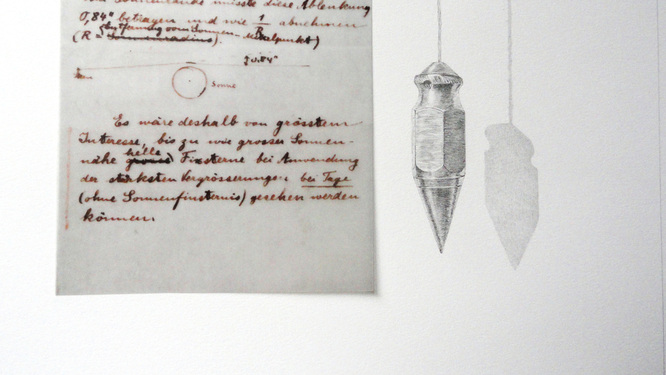
Uranometria Series: Albert’s Prediction
Detail
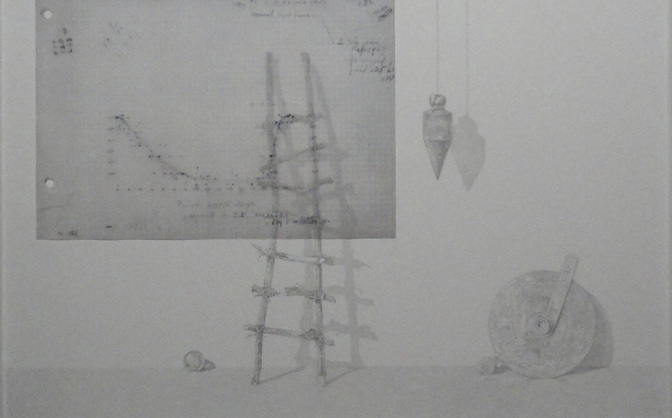
Uranometria Series: Edwin’s Calculations
graphite and digital print on vellum
Edwin Hubble’s hand-written chart where he used period-luminosity relationships to determine the distance to the Andromeda Galaxy and confirmed that it is located beyond the limits of the Milky Way.
Hubble notebook image courtesy of the Huntington Library
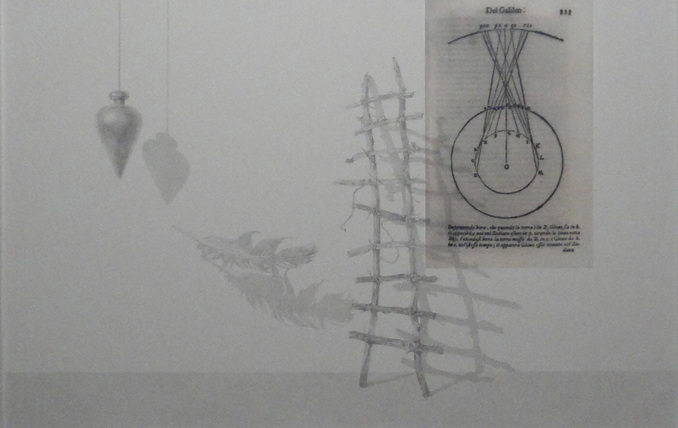
Uranometria Series: Galileo’s Observation
graphite and digital print on vellum
A diagram published in 1632 explaining the irregular retrograde motion of Jupiter as it moves in its orbit relative to the orbit of the Earth as observed by Galileo Galilei.
Galileo notebook image courtesy of the Huntington Library
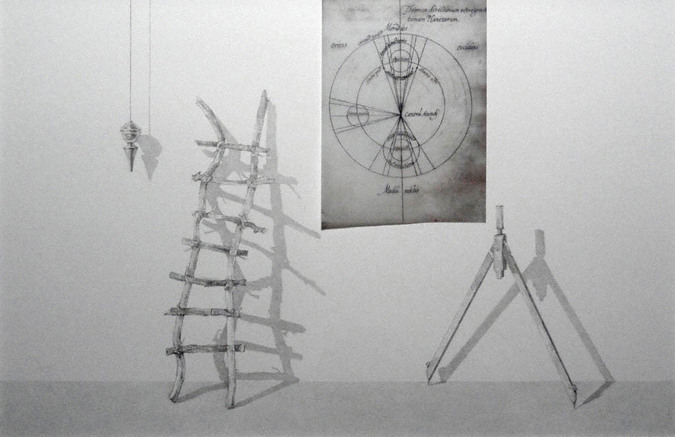
Uranometria Series: Claudius’ Hypotheses
graphite and digital print on vellum
Claudius Ptolemy employed off-center circles called eccentrics and epicycles to explain the motion of the planets within a Earth-centered universe. Although Ptolemy lived in 2nd century, his work first appeared in print in a 16th century Italian manuscript.
Ptolemy notebook image courtesy of the Adler Planetarium & Astronomy Museum
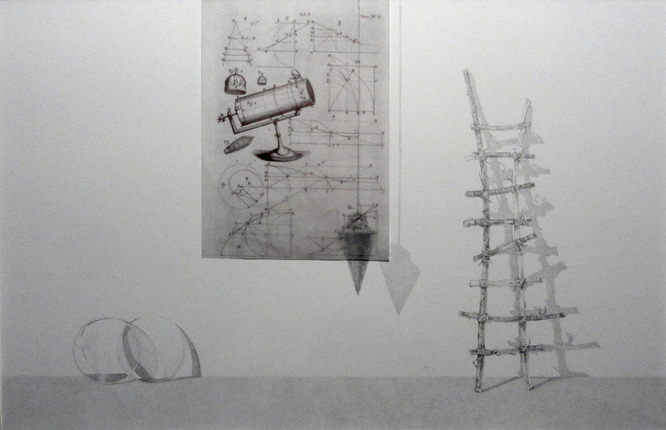
Uranometria Series: Isaac’s Proposal
graphite and digital print on vellum
A diagram of a catadioptrical telescope proposed by Sir Isaac Newton which involved passing light through a concave lens, then bouncing it off a flat speculum, or mirror, and on to the eyepiece of the telescope.
Newton notebook image courtesy of the Huntington Library
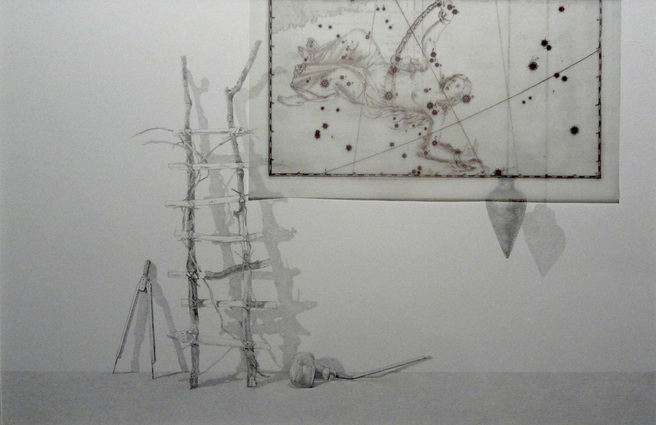
Uranometria Series: Johann’s Burin
graphite and digital print on vellum
Considered the key forerunner of all later star atlases, Johann Bayer’s 1603 “Uranometria” contains fifty-one star charts that were engraved on metal plates, rather than woodcuts.
Bayer notebook image courtesy of the Linda Hall Library of Science, Engineering and Technology
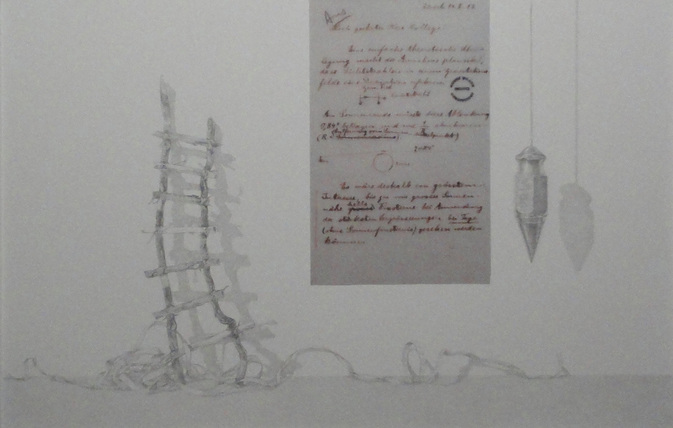
Uranometria Series: Albert’s Prediction
graphite and digital print on vellum
The first page of a letter from Albert Einstein to
George Ellery Hale, 14 October 1913 in which Einstein predicts that light could be bent by a gravitational field - a tenet of his general theory of relativity.
Einstein notebook image courtesy of the Huntington Library
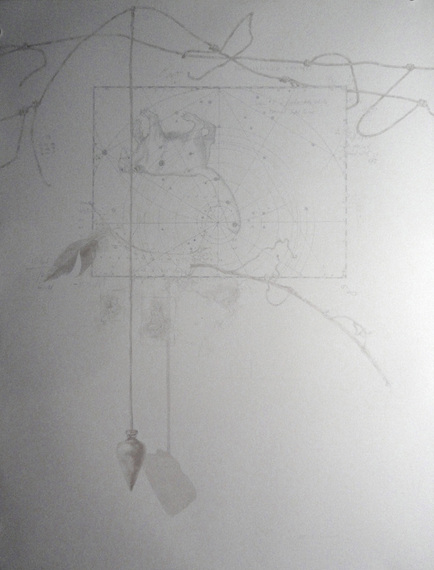
Uranometria Series: Ursa Minor
Gold and Silverpoint
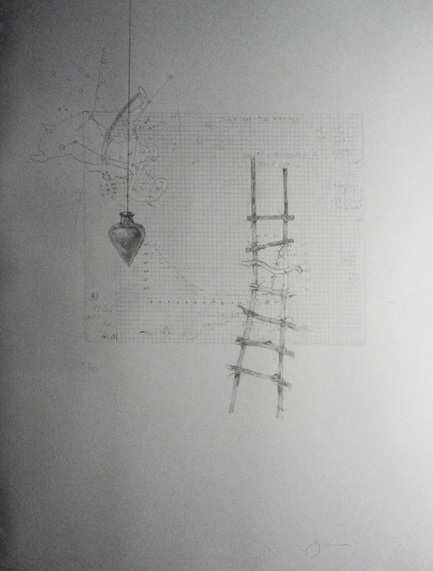
Uranometria Series: Andromeda Rising
Graphite
|
|
|
